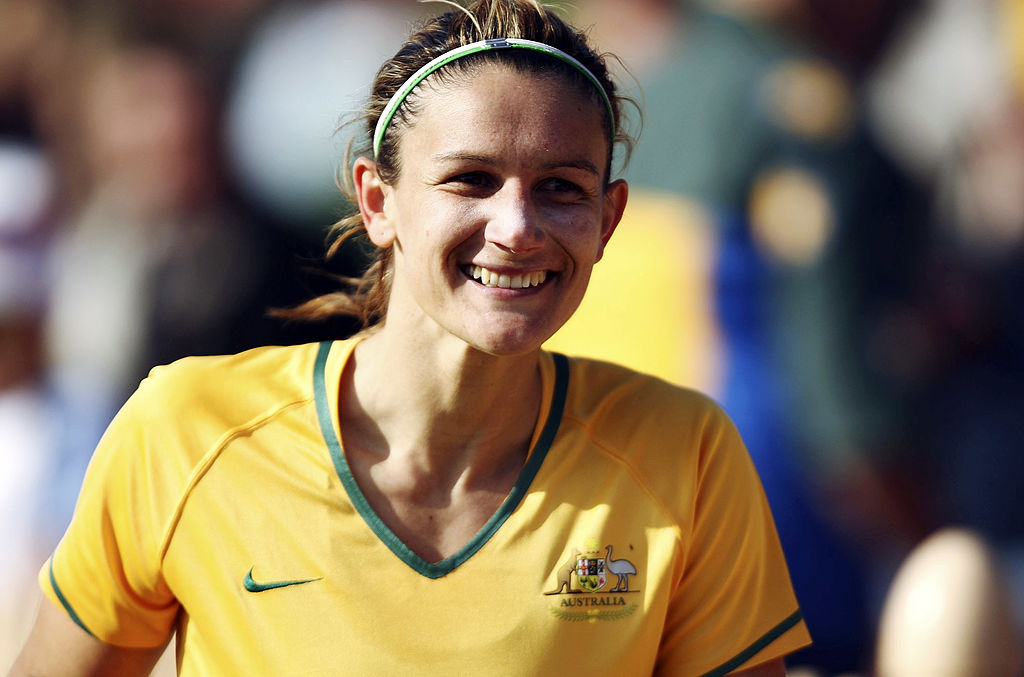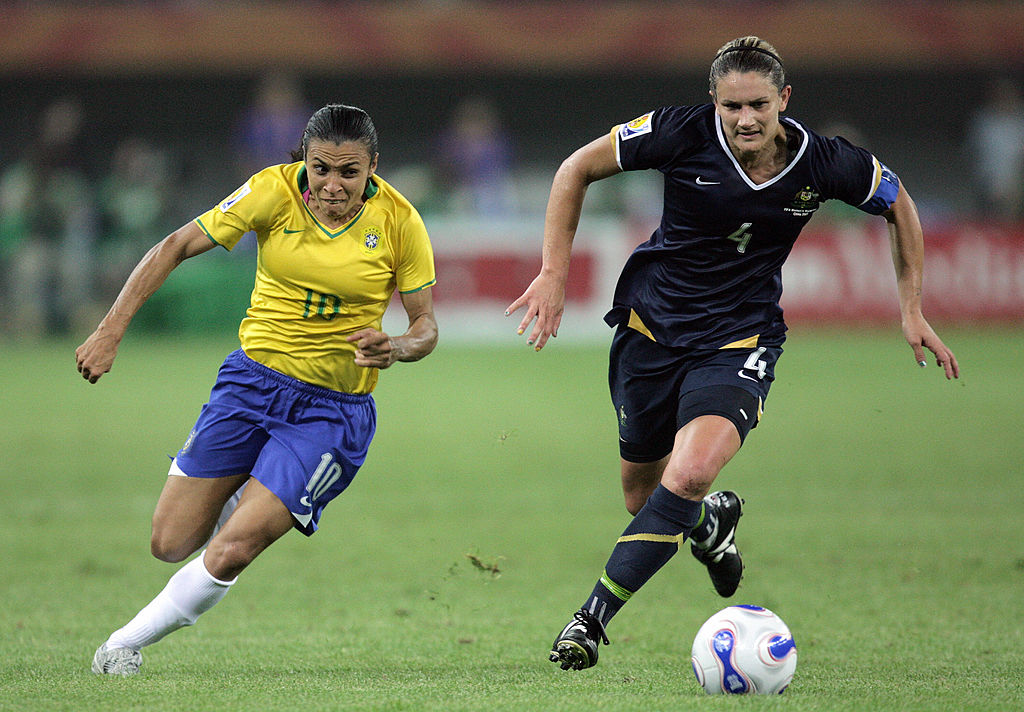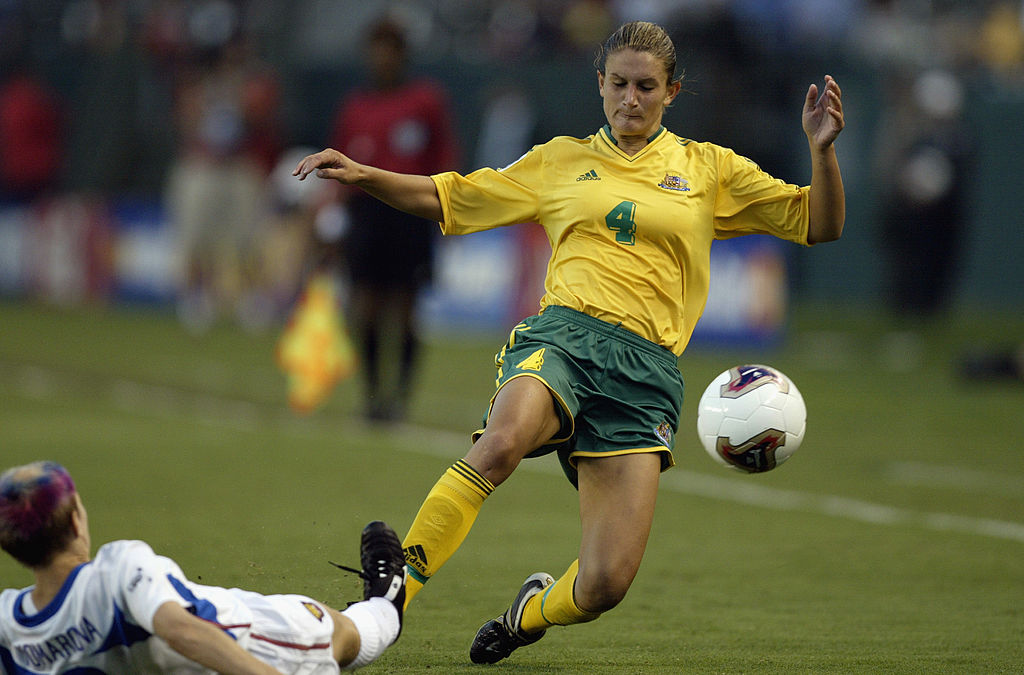The history of Australian football is the history of our multicultural nation: the introduction of new cultures and communities, the rise and fall of structures and institutions, the coming-together of scattered groups to achieve a common goal.
Woven throughout this story are the lives and legacies of individuals and families who have made football – and the country in which it exists – what it is today.
One of those great family names is Alagich.

While former Westfield Matildas defender Dianne Alagich was the first woman in her family to make a mark on the Australian game, she followed in the footsteps of a long line of Alagichs that have shaped football as we know it.
The Alagich football story begins over 80 years ago. In the small mining town of Broken Hill in New South Wales, Dianne’s grandfather Marin, alongside his two brothers Rudolph and Slavko, founded the Broken Hill Soccer Association in 1938.
Marin understood the power of sport – and football in particular – as an antidote to hatred and bigotry; a space where judgements and assumptions and stereotypes could be broken down and swept aside.
After Broken Hill, Marin helped establish the Sydney Yugoslav Soccer Club in 1946 – the first of its kind in the area – as well as several other football clubs across Sydney. This included Yugal Ryde, which became a powerhouse of men’s football in the 1960s and 70s.
Marin’s son, Joe, was one of Yugal’s biggest stars, playing over 260 games for the club across 16 years. He was also the first Alagich to represent Australia after being selected for the Socceroos in 1969.
Marin’s brother, Slavko (or “Len”), also had a son: Colin. He similarly followed in the footsteps of his forefathers by playing over 300 games in South Australia and officiating for the Port Adelaide Pirates.
This is where the Alagich football history branches off in two different directions.
Colin had five children: Richie, Kerry, Chris, Dianne, and Colin Jnr. Richie Alagich played over 250 games in the National Soccer League, wearing the crests of West Adelaide, South Melbourne, and the Brisbane Strikers. He was voted Players’ Player in his first season for Adelaide United in the A-League and helped the club reach the Asian Champions League final in 2008. Richie also competed at Youth and Olympic level.
And then there was Dianne: the first woman to represent the Alagich name in Australian football.

It was almost inevitable that she would follow down the same path; as though her football destiny was woven into the history of her family name.
“I grew up with four brothers, so they sort of forced [football] upon me,” Dianne said.
As soon as I could walk, I had a ball at my feet. I didn’t really know any different from there. I always had someone to play with in the backyard.”
“I played at my local primary school, then went and played at Port Adelaide. All my brothers played at the same club.
“I’ve been pretty lucky with my family. My older brother Richie played professionally, so I always got along really well with him and was able to bounce ideas off him. That’s how our relationship grew; we grew together playing football.”
Dianne’s raw talent – a product of her upbringing – was clear from a young age, and she was quickly part of national team camps. She was selected for the under-16s women’s national team when she was just thirteen and was promoted to the senior squad three years later.
“I found it quite a challenging environment coming into it, being so young and coming into an environment that had been quite established; some of those players had been part of the national team for quite some time,” Dianne said.
“And I came into the team when they’d just missed out on the World Cup [Australia were knocked out in the group stage of the 1995 World Cup in Sweden], so there were some new players coming in as well. It was a pretty tough environment.”

However, there was one player that Dianne remembers fondly for welcoming her to her new Matildas family.
“I still remember Julie Murray. I knew who Julie Murray was because she had been an assistant coach for the under-16s Australian team. She welcomed me with open arms and I’ll never forget that actually because not all the Matildas were at that point. I still remember Julie welcoming me and pretty much offering that support to me because I was so young.
“They’re not going to know who you are as a person, really, and you just sort of come in with starry eyes. So it was a combination of me being so young and feeling that intimidation, especially being from Adelaide when there was no one else in the team from Adelaide.
“I felt like a really small fish in a big bowl.”
READ: The Westfield Matildas: A truly Australian story
MORE: Celebrating another year of progress
READ: Carpenter - ‘I give everything when I’m wearing this jersey’
Three World Cups, two Olympic Games, three years in the USA’s top women’s league, and captaining Adelaide United in their first W-League season, Dianne’s career for both club and country took her all over the world. All the while, she had to hold down multiple jobs in order to make ends meet, which was the norm for women footballers throughout the 1990s and early 2000s. But the one constant in her life was always the Alagich family.
“My family were everything to me,” she said.
“Every time I didn’t make a team or we lost a game or I got an injury, I’d call my dad up or my brother or my mum and have a chat to them, and they’d give me that sense of ‘you’re more than just football, you’ve overcome this or that’. You can have your blinkers on during your career and not focus on anything else, and you sort of realise that there’s a bigger picture. There’s more to life.
They’re always there for me no matter what. And I knew that; they’re always gonna be there for me, when you’re doing well, when you’re not, when you’ve made a mistake… in life, I mean.”
After she hung up the boots in 2009 following a string of injuries, she didn’t follow her forefathers into other areas of football like coaching or administration. Instead, Dianne turned her attention to her own family, where she’s now writing the next chapter of the Alagich story.
“My most important job now is my children and being a good mother for them,” she said.
“Some people ask me about my daughter, ‘oh, is she going to be a Matilda?’ and I’m like ‘I really don’t care, I just want her to be happy and healthy.’
“For her to be happy is my life goal now. What you consider important is very, very different once you have children.”
From its earliest days as a space for migrant communities to come together and celebrate their histories and cultures, to its later stages as a space for women to forge a path playing sport professionally, the Alagich name is woven into the fabric of Australian football.

Like her grandfather Marin, Dianne’s story is one of struggle and sacrifice, of triumphs and tribulations. Australian football’s story is inextricably tied to the stories of its migrant groups; that colourful assortment of language, song, dance, food and culture.
At a time when sport is having to reconsider its place in the world, the story of the Alagichs – the story of Australian football – shows us that sport offers one of the most powerful spaces where conversations about history, identity, belonging, and community can be had. And as Marin himself understood, football shows us what we can achieve when we work together towards a common goal.
That, more than ever before, is why it still matters.
